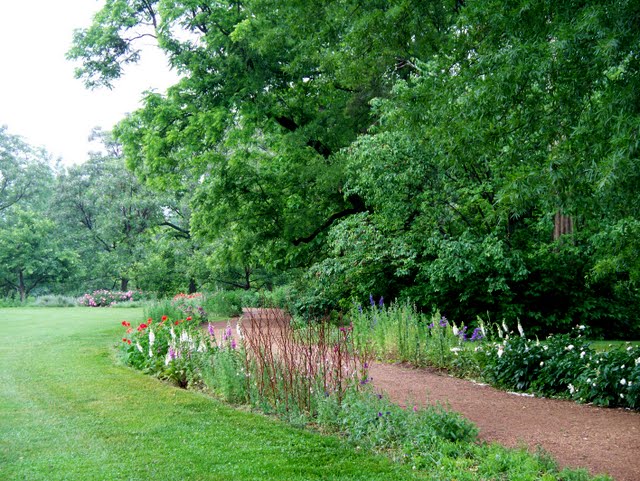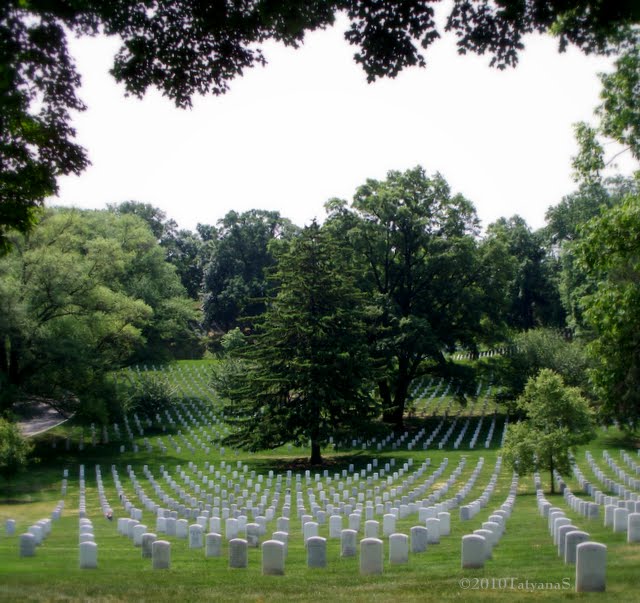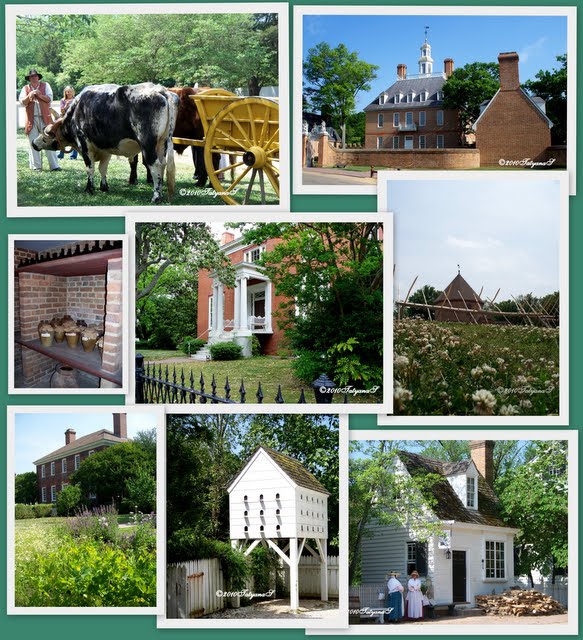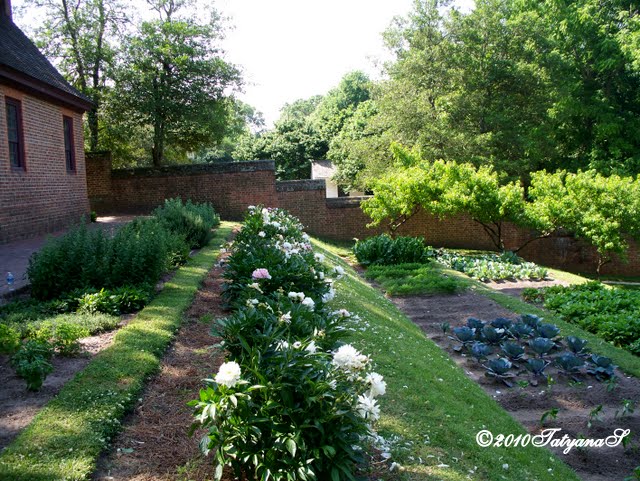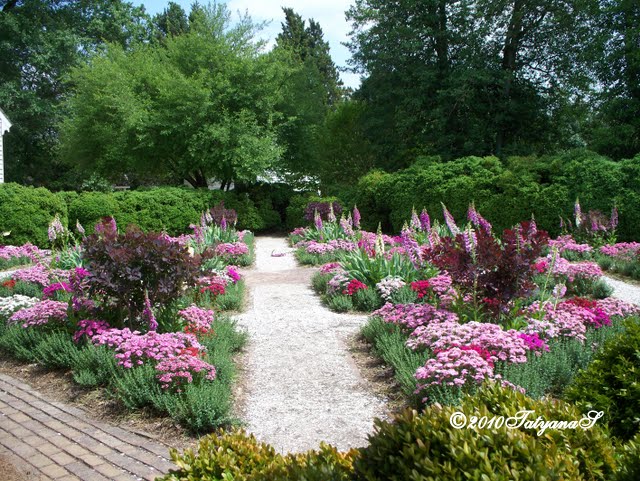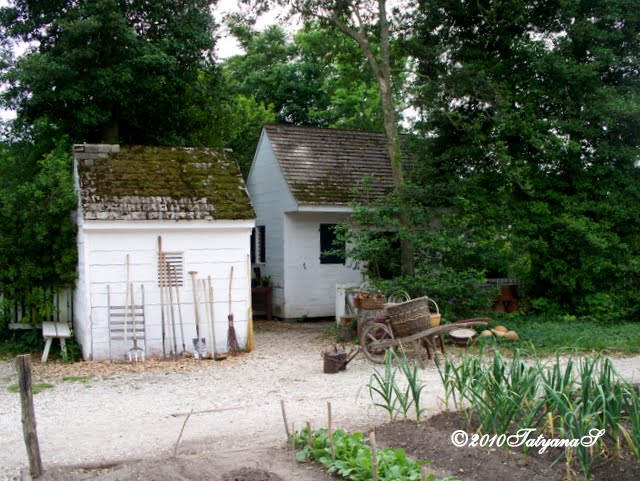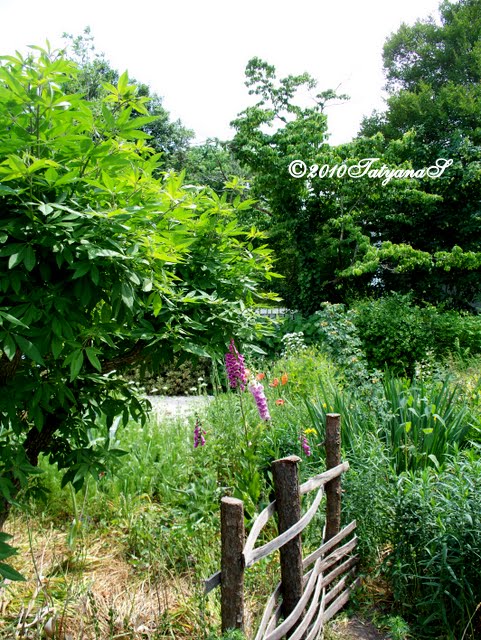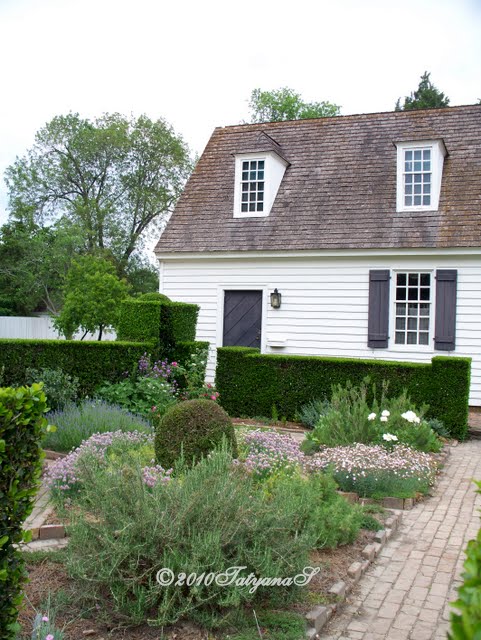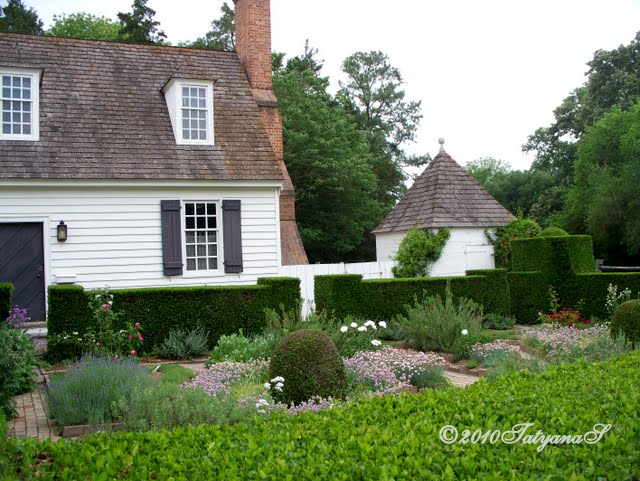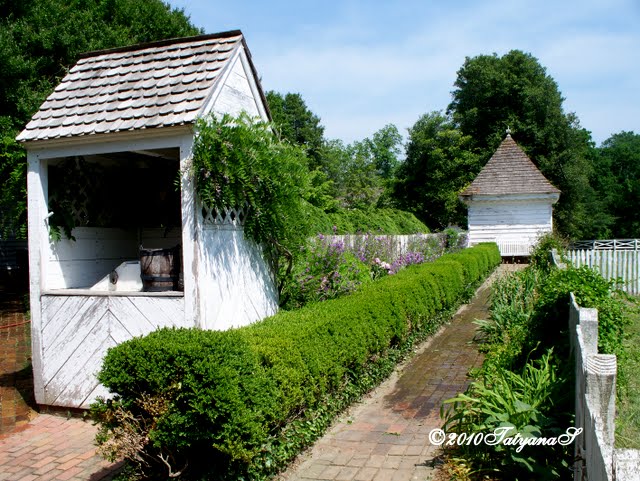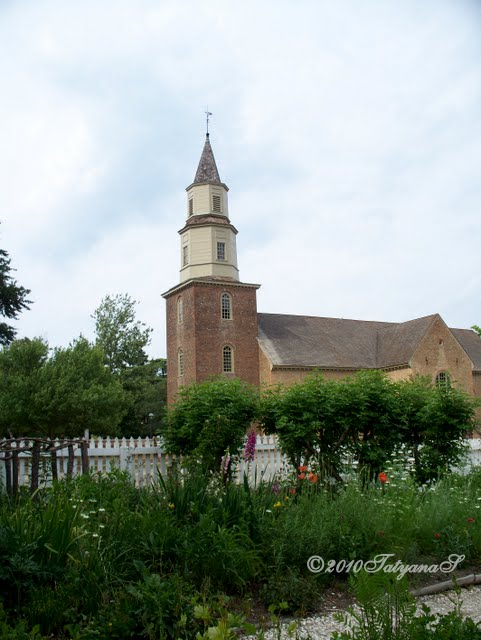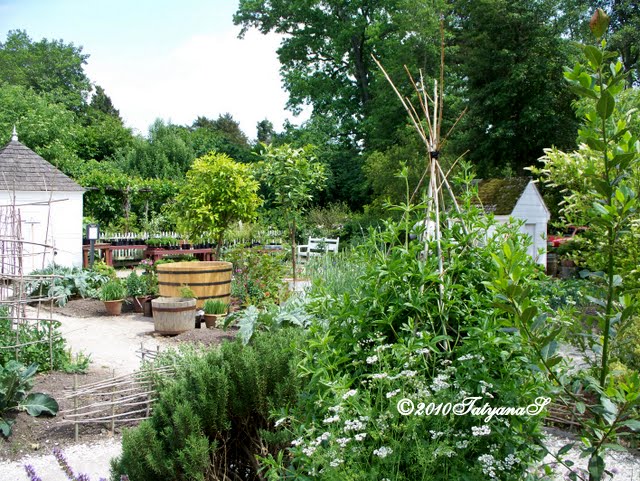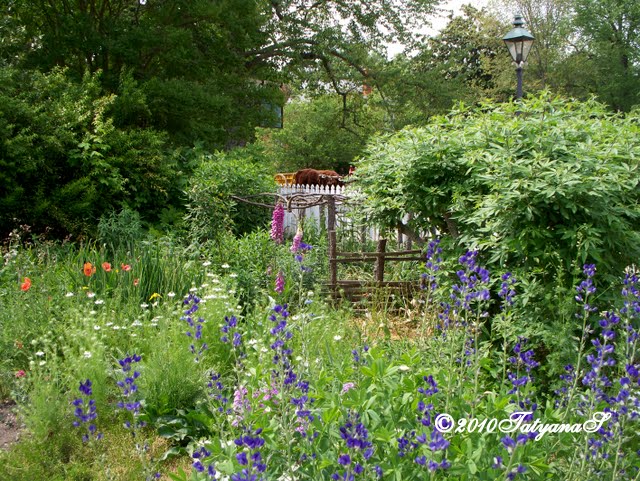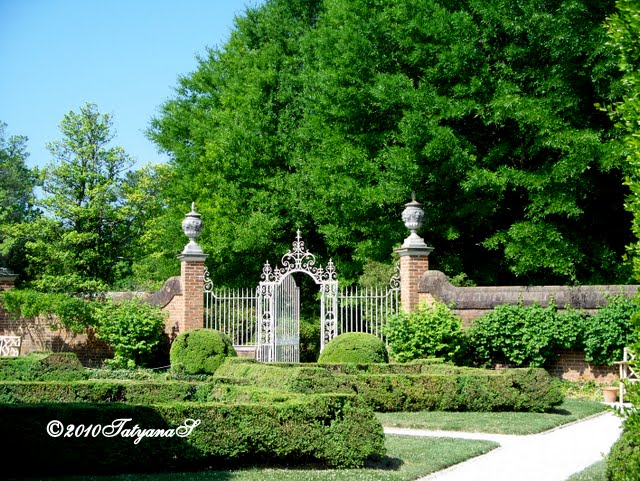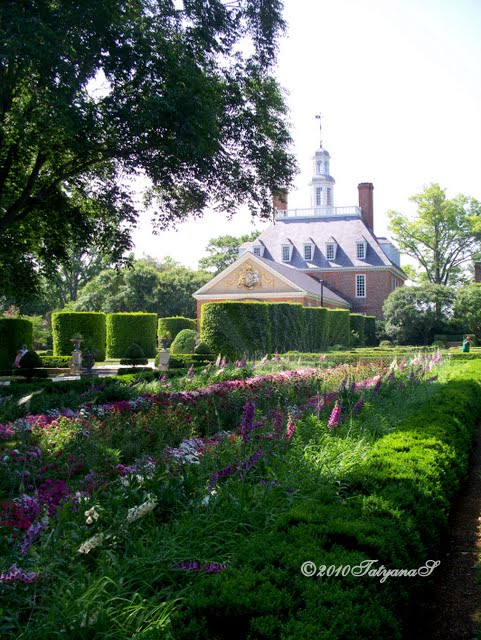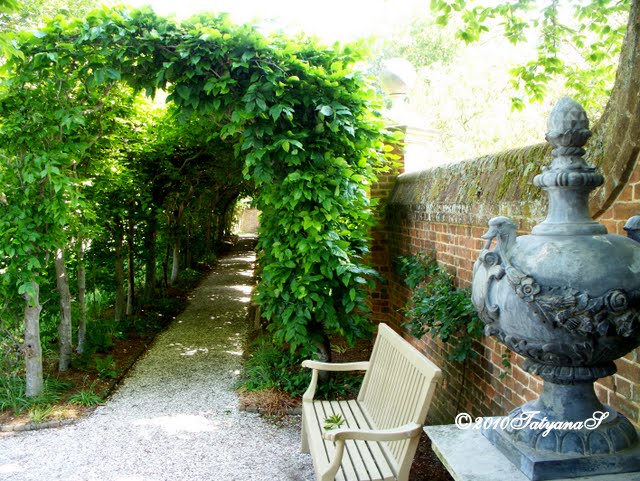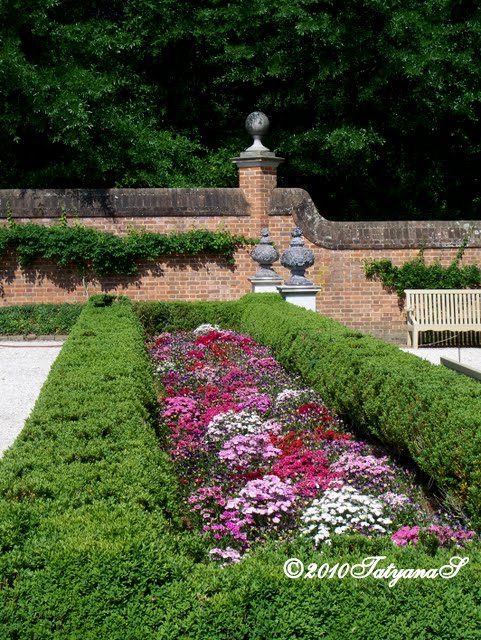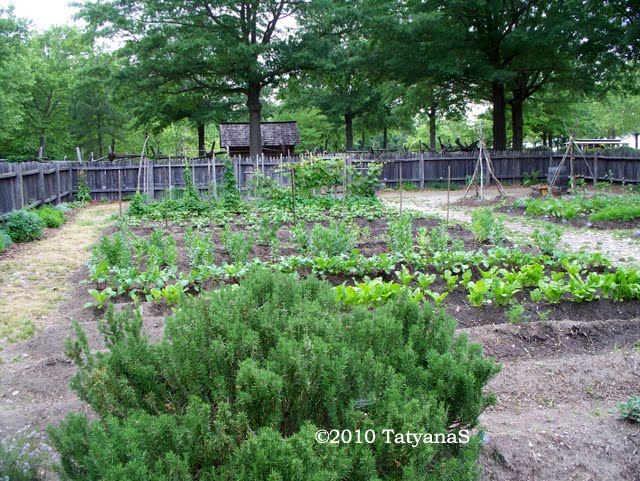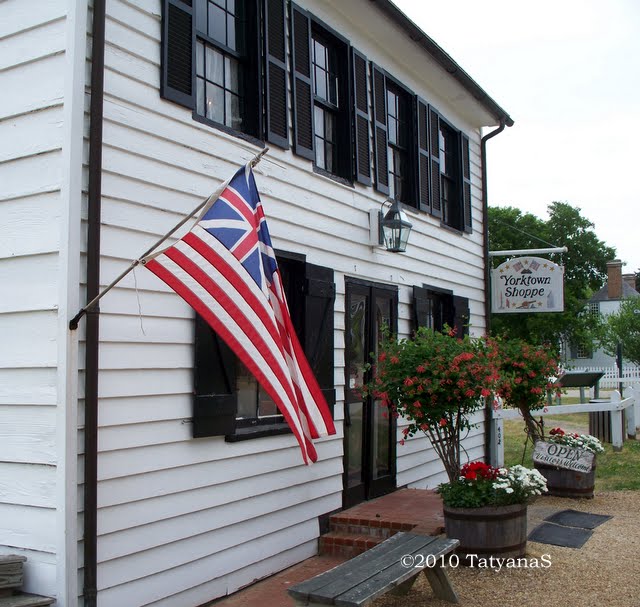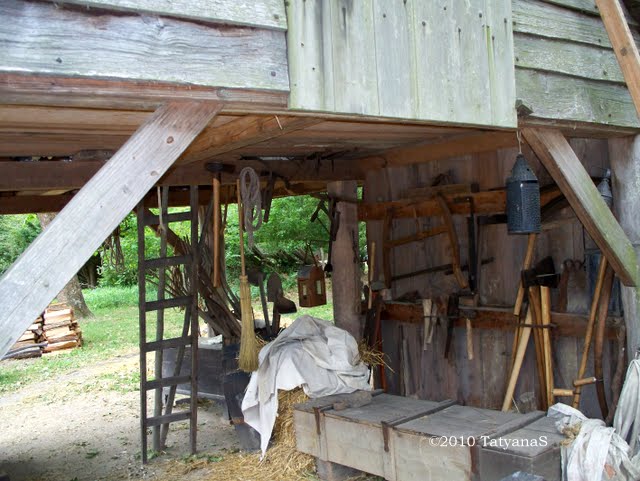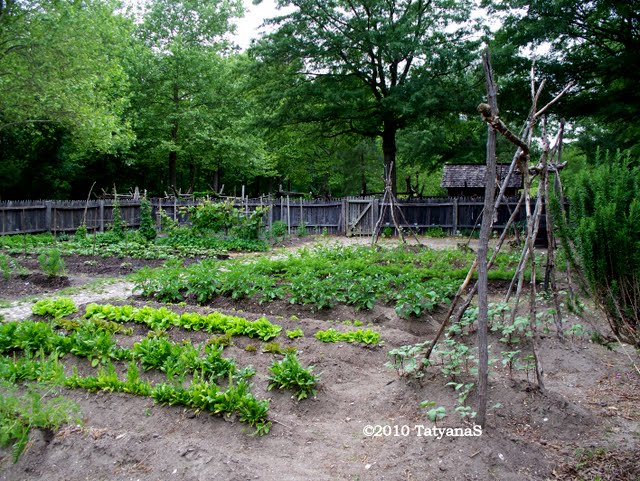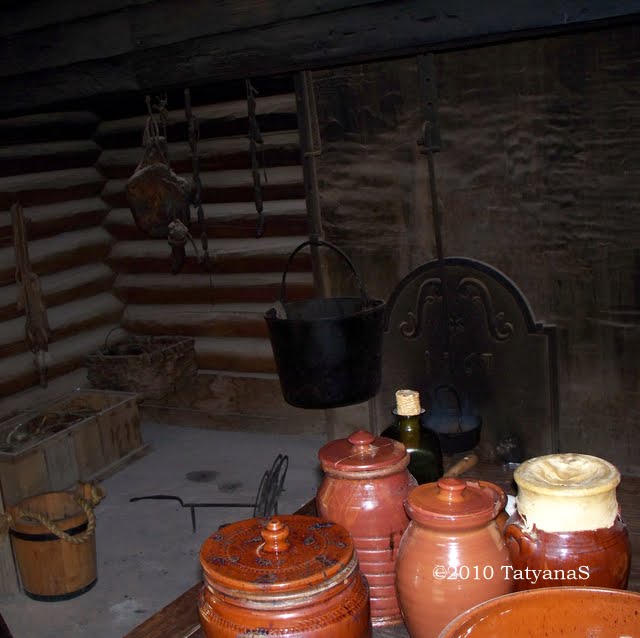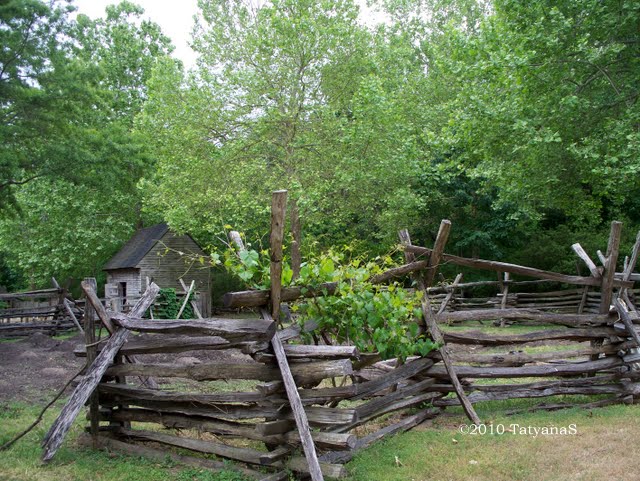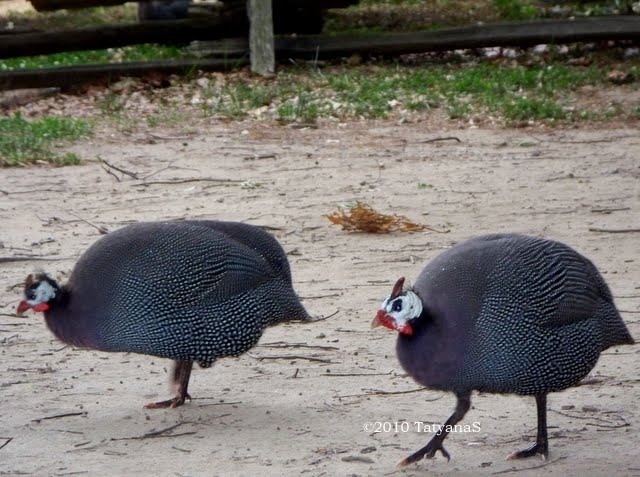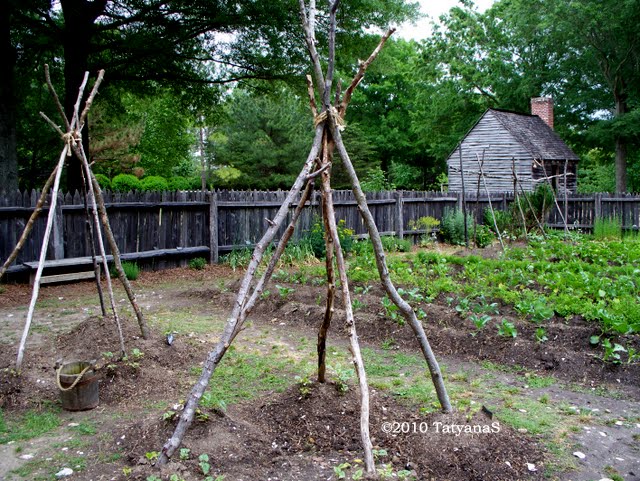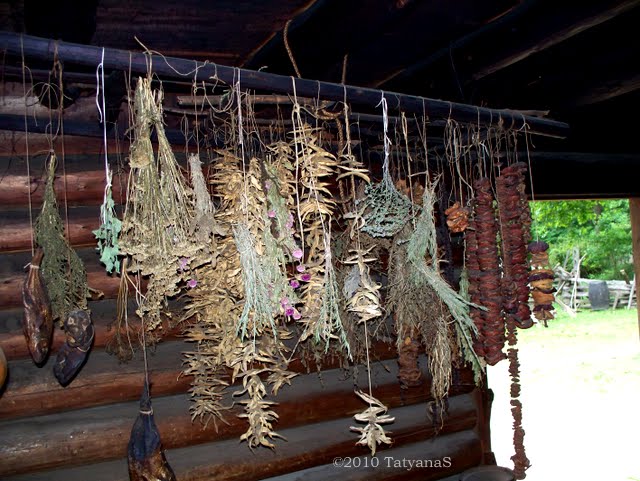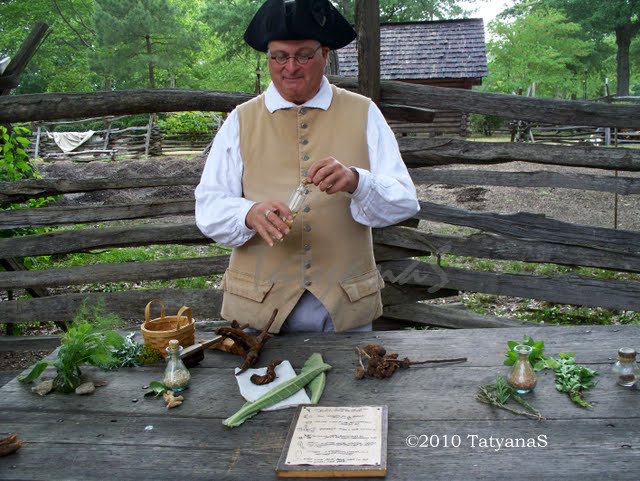You know me, I love foxgloves (and love to show them off on my blog: Foxglove ). I don't know if that love is mutual. I want to believe it is. Why would they come back every year if they didn't like my garden? They selfseed, and their tiny seeds, which remind me of poppy seeds, find space for them to grow. Naturally, seedlings appear close to places where the parent plants have grown. It is always a surprise to find them far away, in unexpected places, sometimes on the opposite side of the yard. My first 2010 blooming foxgloves are a good example. These plants are tucked in between the garage wall and the driveway. A small piece of unamended sandy soil and a couple of hours of morning sun - not much of a luxury, but look what I have:
...

*
Last year, there was one plant, also a volunteer, growing there, but now I have several of them, both purple and white. Oh, I know the secret: look who is fiddling for them. This fiddler is a kind soul - earlier this season, he was playing serenades to my potted tulips. The tulips are gone now and the pot has been moved behind the garage, but the cat found new listeners!
Foxgloves began teasing me in early March as I found them everywhere we took a trip. During our spring break, in Las Vegas' Bellagio casino:
...
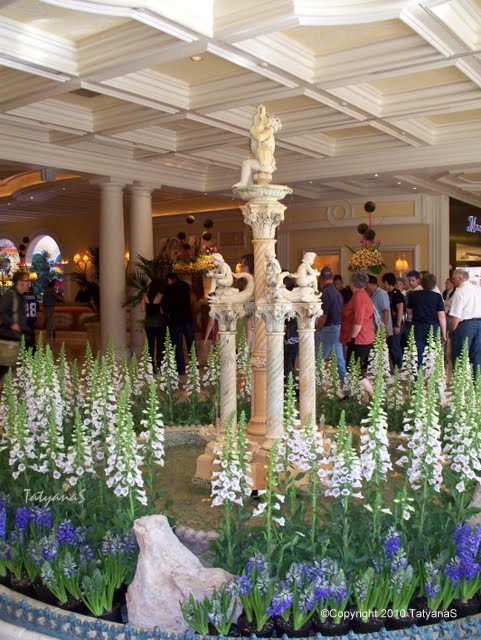
*
...
*
Last year, there was one plant, also a volunteer, growing there, but now I have several of them, both purple and white. Oh, I know the secret: look who is fiddling for them. This fiddler is a kind soul - earlier this season, he was playing serenades to my potted tulips. The tulips are gone now and the pot has been moved behind the garage, but the cat found new listeners!
Foxgloves began teasing me in early March as I found them everywhere we took a trip. During our spring break, in Las Vegas' Bellagio casino:
...

*
Most of my foxgloves grow behind the house, and some of them will bloom soon. I hope they will do as good a job for my garden as they did last year ( It's Foxglove Time!) .
*
*
Did you see a new Digitalis 'Serendipity'? Hermes posted a picture of it and a link http://www.rhs.org.uk/Shows-Events/RHS-Chelsea-Flower-Show/2010/Plants/Plant-features/Top-10-plants.
...
*
This is what is said about a new foxglove in the post "Matt Biggs' top 10 new plants":
"Digitalis ‘Serendipity’ – I’m not normally one for flouncy flowers but happily make an exception with this one. Produced by Master plant breeder and selector Alan Postill, this is one of the most extraordinary Foxglove’s, ever! The split tubular flowers with gently undulating petals, give it a soft, ruffled appearance."
The following is the description of 'Serendipity" from http://gardenshop.telegraph.co.uk/ :
"A new and exciting foxglove, which produces a robust rosette of foliage from which an upright flowerspike emerges in summer. It grows to 1.2m tall and is clothed with curious, wavy-lipped flowers, which look more like orchids than foxgloves. A hybrid of Digitalis 'Saltwood Summer'. this is a stunning plant that is bound to become a talking point in your garden. These plants are mainly biennial, although they will produce plenty of new sideshoots and self-seed relatively freely".
Sounds exciting, doesn't it?
*
Copyright 2010 TatyanaS




